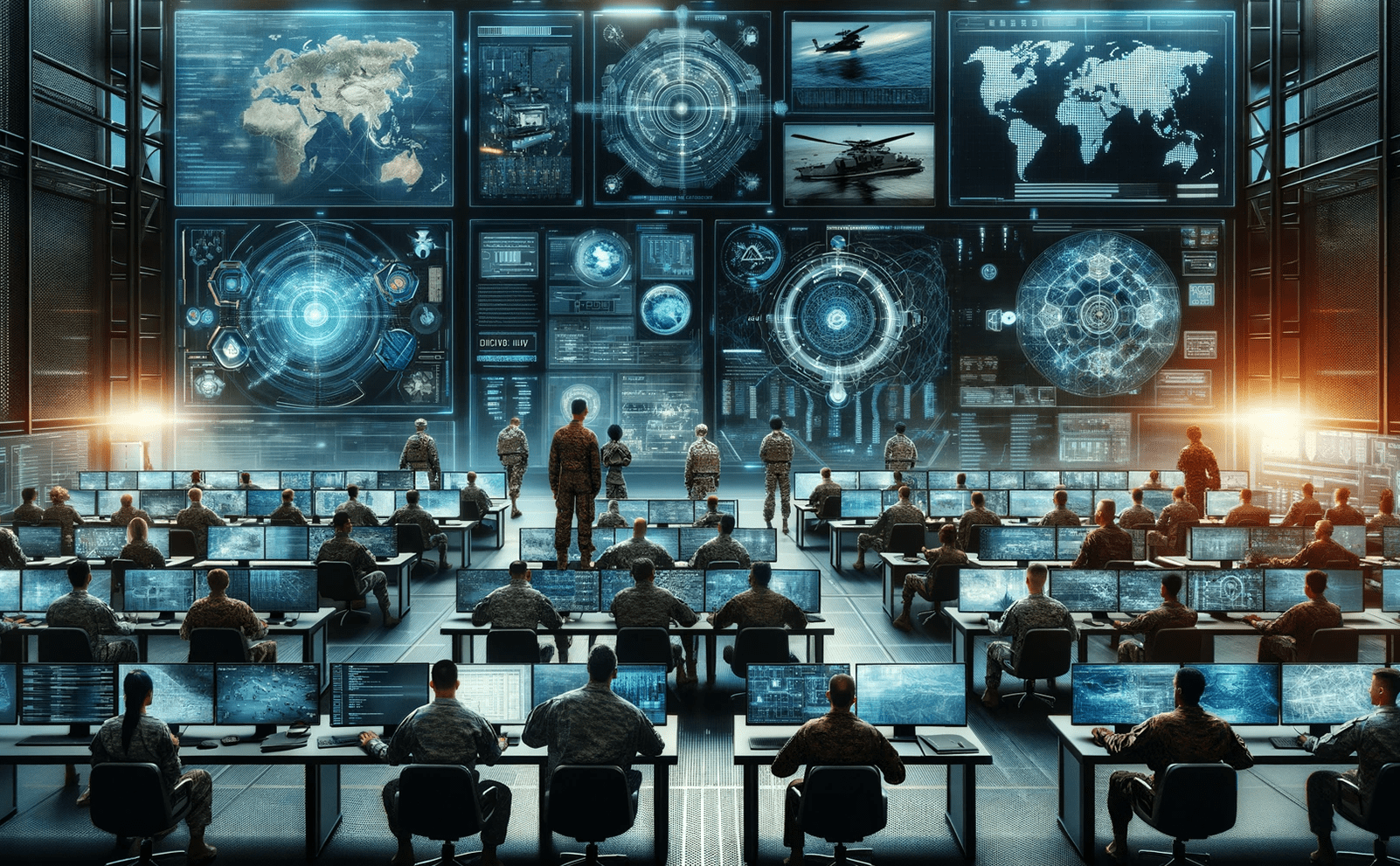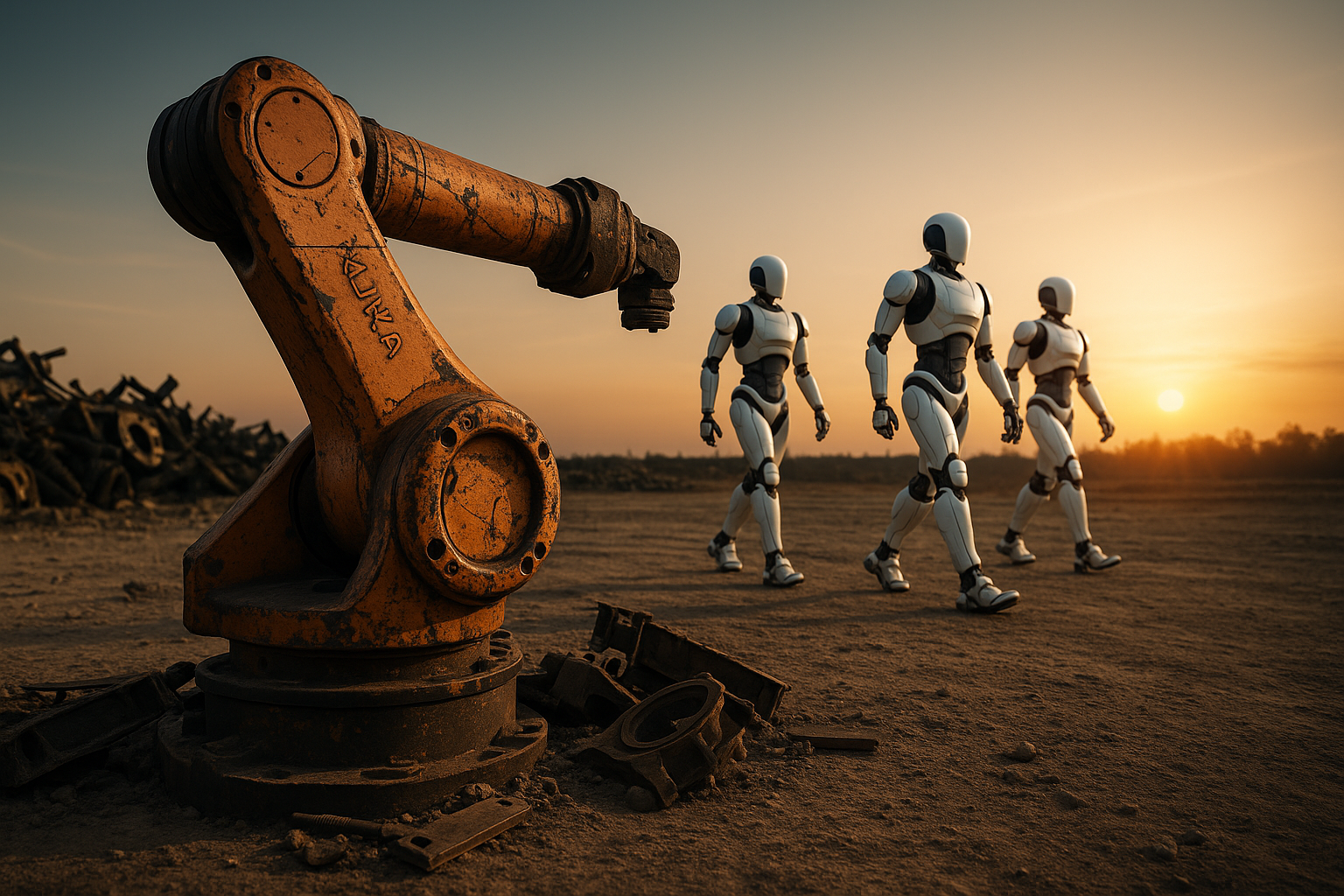The decline of human autonomy in the military and geopolitics and its consequences
AI is able to analyze huge amounts of data and process it for us in such a way that we can supposedly make better, or at least more data-based, human decisions. Wherever decisions are made based on commonly fixed rules, AI will replace human work. This is precisely what many people dread because it is unclear where and whether we are drawing the line.
To explore this ambiguity in more detail, it is worth taking a look at history. Even if AI is a fairly new development in today’s sense, there have been comparable processes in the past. These relate primarily to weapons systems, the military and the development that has taken place here over the last 200 years through machine information processing.
Air combat and the path to autonomous military systems
States and their leaders have always managed to utilize and deploy the best available technologies and information processing capabilities. Nevertheless, until the First World War, it was mainly humans fighting humans. Technology was only an extension of man. Decisions were made locally by people, from the fighting soldier to the commanding general.
Local and directly human decision-making in the military shifted with the development of fighter pilots and combat aircraft. Over the last 100 years, we can see how technology has pushed the boundaries of recognition and decision-making into the range of millisecond. Instead of limiting situations to the visual range of one or more people, it was now possible to extend the range to hundreds of square kilometers. Without the support of technology, an air-to-air missile cannot be controlled by humans in the millisecond range and cannot be triggered at all.
Without massive technological support, billions of data points cannot be processed and evaluated. In fact, such an aircraft crew is relieved of millions of decisions when flying, reconnoitering and defending the aircraft. Humans are only involved in the decision to trigger the large weapon systems in the loop. In the last 20 years, we have further displaced humans with drones – they no longer even sit in the flying object. Even if humans still have control over the use of lethal weapons in most cases, the line between drone and drone self-defense is already beginning to blur. In fact, today’s drone generations are already fighting machine against machine without human interaction.
Cyber war without physical violence
We are experiencing a very similar development in military cyberspace. Electronic attacks on electricity infrastructures, power plants or banks can no longer be defended against by humans, but only by autonomous algorithms.
Over the next 20 years, we will continue to push the boundaries from semi-autonomous to de facto autonomous and therefore self-deciding systems. Decisions will also be made in an increasingly decentralized manner and can still be better coordinated, precisely because machines can exchange more complex information in less time than humans. In addition, there will be significantly more of these drone combat units than we have people in the armies today. We will notice these changes both in the air and on the water, as well as in land operations. Where exactly will the line to military operations be? What precisely is a purely electronic attack on a power plant without troops on the ground? At what point does it become an act of war? Is the manipulation of public opinion by states or interest groups via Facebook or X-bots already an act of war? So far, it is precisely states that have a monopoly on the use of force and thus also on war and conflict. With this logic, we would have to assign all manipulations or changes to systems, even if they are carried out by commercial enterprises or other interest groups, to newly created virtual laws of arms and war.
Geopolitics are determined by asymmetry of causable damage
A major challenge, which can be clearly seen in the current conflicts in Ukraine and Israel, is that an attack drone is up to 10 times cheaper to produce than the defense mechanism. This imbalance between attack and defense can no longer be measured in the case of X-bots (Twitter) or manipulation and profile platforms such as Tiktok and other manipulations in the social media sector.
In the last 50 years, the ability to produce nuclear weapons has determined geopolitics and thus the global balance of power, because an owner and potential attacker could create maximum asymmetry between the production of the weapon and the impact on the living space of other states. The real nuclear weapons in today’s world are algorithms that can attack infrastructure, manipulate opinions, and destroy or manipulate stock markets and economic systems. How does the geopolitical balance of power shift when it is “only” technological competence and economic power that determines military power? Even without physical violence and physical terror, our democratic structures are being destabilized by states such as Russia, Iran or China via cyber instruments and the insecurity in our systems is being increased. What is particularly dramatic is that, unlike splitable material, chips and algorithms are virtually untraceable. This means that no effective protective mechanisms can be put in place.
The relationship between states and the economic system
Over the last 200 years, the state and economic forms that have allowed the economy to develop in a relatively free form with market mechanisms and individual ownership have prevailed. States with a monopoly on the use of force both internally and beyond their own national borders were the exception. It will no longer be possible to maintain this boundary, as information and information flows no longer have a spatial allocation and yet still have a concrete impact on physical local systems.
Cyber geopolitics and digital war
With AI, two cornerstones for the stability of our society and state systems are slipping away from us:
- Digital machines will carry out conflicts autonomously. Due to their prevalence and speed, machines will settle these conflicts among themselves. As with nuclear weapons, whoever controls these systems will have absolute power over our entire planet.
- We will no longer find a clear boundary, as we do with weapons systems and the monopoly on the use of force, to distinguish and demarcate state action from economic action. This will either lead to a massive weakening of the state’s position or to a new form of economic state. These could be conglomerates of sovereign economic zones that coordinate power and economic interests more closely.
In any case, it can be assumed that AI development will have a massive impact on each and every one of us as individuals over the next 30 years and will also significantly destabilize our state systems. Hiding from AI and not dealing with it is therefore not an option for who wants to help shape the future.
.



